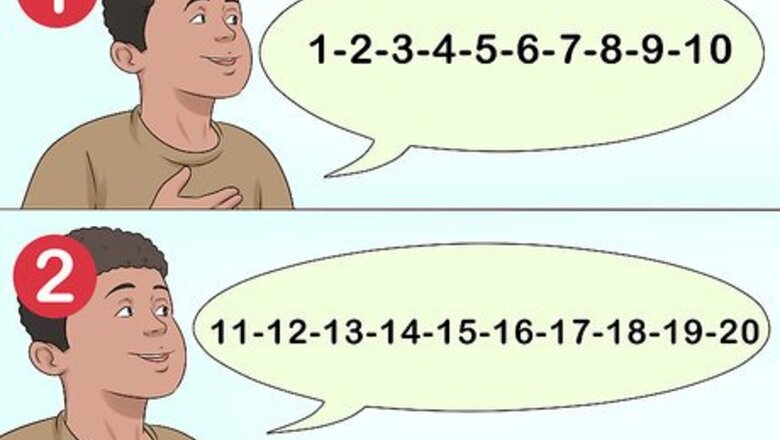
views
Teaching Mental Math
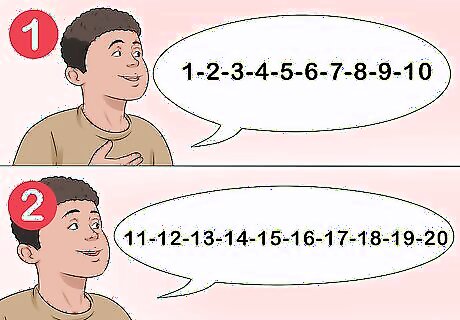
Have them recite 1-10, and then 10-20. Start by saying “1” and then have your child repeat after you. Count up to 10 together. Do this at least two times so your child can get used to hearing the numbers out loud. This will also help them learn the ordering of the numbers. You can then move on to saying “10” and having your child repeat after to you. Count up to 20 together. Do this at least two times. Draw a number line to help your child understand the relationship between each number.
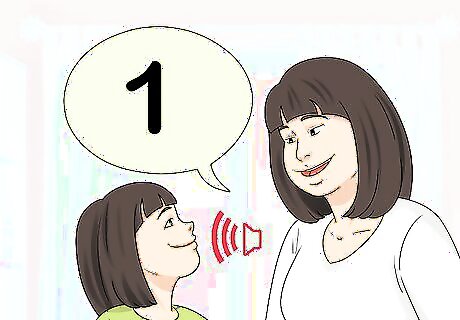
Say “1” out loud to your child. Once your child is comfortable with saying the numbers aloud, you can start to teach them how to add and subtract. Say “1” in a clear voice to your child.
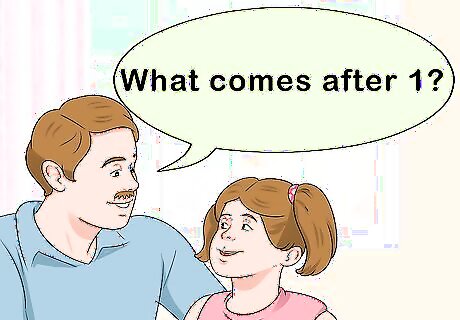
Have them respond with the next number. Ask them, “What comes after 1?” Wait five to ten seconds for them to respond. Allow them time to think about their answer. If they do not seem to know the answer, you may say, “2.” You can then go through all the numbers again, counting aloud together. Then, try asking them “What comes after 1?” again. Work with them until they remember the right answer and respond with “2.” You can also take turns saying one number. For example, you may say “2” and your child may say “3,” you may say “4” and your child may say “5.”
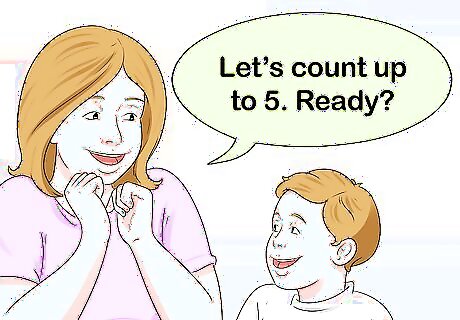
Encourage them to count up to a number. You may say, “Let’s count up to 5. Ready?” Then, encourage your child to count aloud to 5. Give them time to think and do not rush them. You can prompt or encourage them as needed. When they get to 5, congratulate them and say “Great going” or “You got it.”
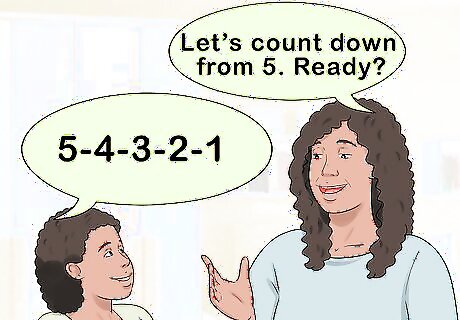
Have them count down to a number. You may say, “Let’s count down from 5. Ready?” Then, encourage them to count down to 1. Remind them that you are going backwards, down from 5 to 1, rather than up, from 1 to 5.
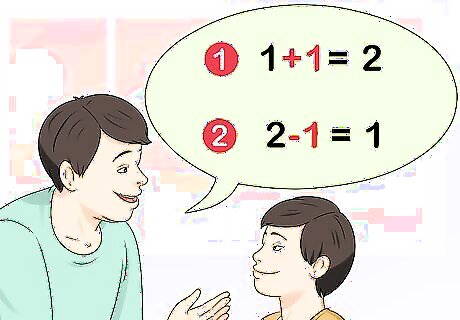
Explain what addition and subtraction are. Tell your child, "When we put more onto a number, we are adding to it." You can then use an example like adding one to "1" to make "2." Compare it to counting up to a number, where you add onto the original number to get a higher number. You can then explain subtraction by telling your child, "When we take away from a number, we are subtracting from it." Use an example like removing one from "2." Compare it to counting down to a number, where you subtract from the original number to get a lower number.
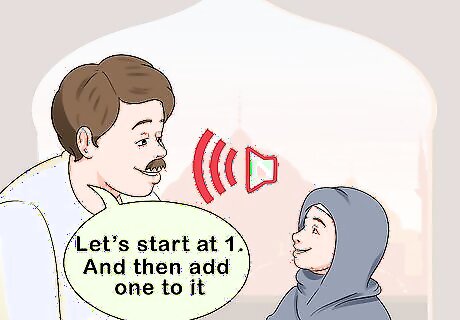
Instruct them to add out loud. You may say, “Let’s start at 1. And then add one to it. We’ll count together. Ready?” Then, encourage your child to start at 1 and add one to get to 2. Give them time to count aloud to 2. If they get stumped, helped them along. You can also try having them start at 1 and adding two to get to 3. Then, have them try counting from 2 and adding two to get 4. Work with them on adding small amounts of one, two, and three. Make sure they speak aloud when they are counting so they can do the math in their head. Discourage them from counting on their fingers. Try to get your child to count in their head instead.
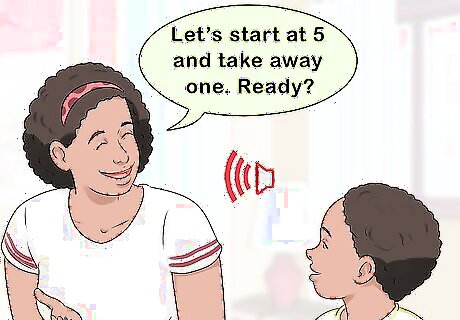
Encourage them to subtract out loud. You may say, “Let’s start at 5 and take away one. Ready?” Then, give them time to get to 4. Remind them of the number that is one below 5 to help them subtract correctly. You can then encourage them to subtract two from 5 or two from 3. Make sure they say the numbers out loud as they subtract.
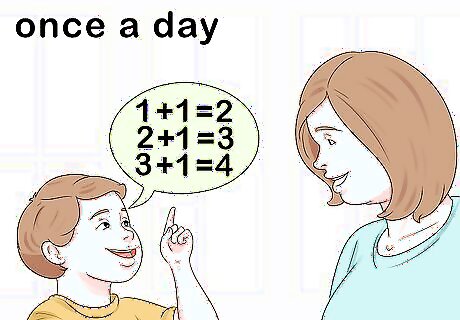
Do mental math once a day with your child. The more you do mental math with your child, the better they will get. Set aside one hour a day to do mental math with them. Work on teaching them how to add or subtract larger amounts. Make sure you both say the numbers aloud so they can learn to do the math in their head and memorize the numbers by listening to them. EXPERT TIP Joseph Meyer Joseph Meyer Math Teacher Joseph Meyer is a High School Math Teacher based in Pittsburgh, Pennsylvania. He is an educator at City Charter High School, where he has been teaching for over 7 years. Joseph is also the founder of Sandbox Math, an online learning community dedicated to helping students succeed in Algebra. His site is set apart by its focus on fostering genuine comprehension through step-by-step understanding (instead of just getting the correct final answer), enabling learners to identify and overcome misunderstandings and confidently take on any test they face. He received his MA in Physics from Case Western Reserve University and his BA in Physics from Baldwin Wallace University. Joseph Meyer Joseph Meyer Math Teacher Challenge your child with mental math problems. Help your child boost their math skills with practice problems where calculators, papers, or any other counting tool aren't allowed. Discuss ideas and solutions together to build problem-solving skills and keep math exciting.
Using Physical Objects and Flashcards
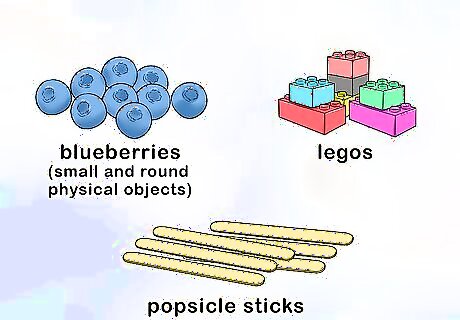
Choose small, round physical objects like blueberries, legos, or popsicle sticks. It may be helpful to connect math with the child's experience and make it more visual. Pick objects that are the same and easy for your child to pick up and hold. A food like blueberries or Cheerios may be good, especially if you want to give them to your child as a snack later. Popsicle sticks, legos, or wooden blocks would also work. Generally, try to use something you have a lot of. Avoid sharp objects or objects with sharp corners. Do not use objects that are different shapes or colors, as this can confuse your child. Bouncy balls, rubber insects, and puff balls also work well for this.
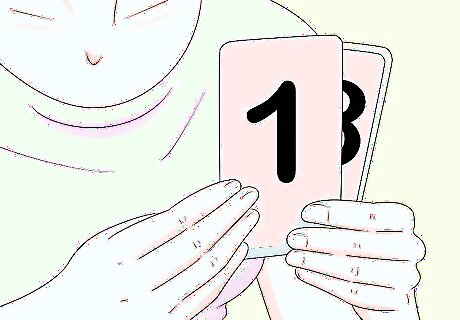
Use flashcards with numbers as a guide. You can write the numbers 1-10 on flashcards or use math flashcards with numbers printed on them. You can also use a deck of UNO cards as long as they only have one number on them. Make sure the numbers are clearly printed, large, and easy for your child to see.
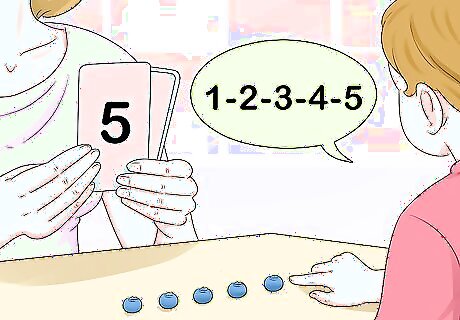
Have your child count out the objects to a number on the flashcard. Put the objects in a pile. Then, flip over a flashcard with a number on it. Have your child count out the same number of objects from the pile. You may count with them at first to help them get the hang of the numbers. For example, if you flip over a flashcard that says “5,” you may then instruct your child to count out five of the objects. Keep doing this with different flashcards. Have your child count the objects out several times to different numbers so they get a hang of the math.
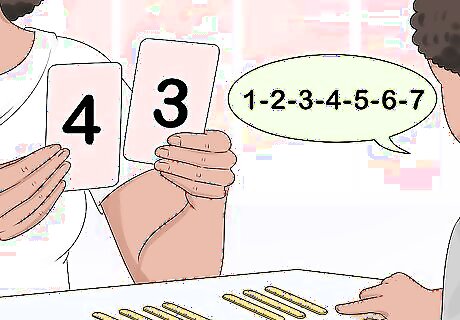
Instruct them to add to the pile using the flashcards. Put out one flashcard and encourage them to count out the objects to the first number in a pile. Then, pull out a second flashcard and tell them, “Now, how much would we have if we add this amount?” Have them add the corresponding number of objects to the pile. For example, if you put out a flashcard that says “3,” you would first instruct your child to count out three objects. Then, if you pull out a flashcard that says “2,” have them add two more objects to the three objects. Finish by counting out the total number of objects in the pile together so it equals “5.”
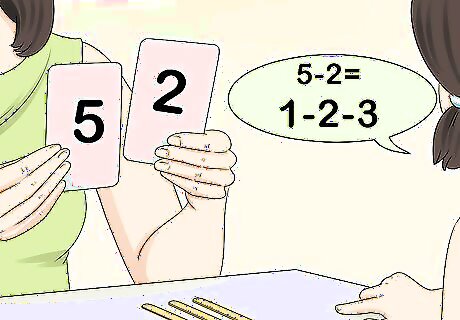
Ask them to subtract objects from the pile. Once they get the hang of adding to the pile of objects, have them remove objects to learn how to subtract. Show them the number on first flashcard and have them count out the objects. Then, show them another flashcard and say, “Now, what we would we get if we take away this number from the pile?” Give them time to subtract the right amount from the pile. For example, if you pull out a flashcard that says “5,” have your child count out five objects. Then, if you pull out a flashcard that says “2,” have your child remove two objects from the five objects. Finish by counting out the total number of objects in the pile together so it equals “3.”

Practice addition and subtraction with the objects once a day. Get in the habit of doing one hour of addition and subtraction with your child using the objects and the flashcards. Work up to adding and subtracting larger numbers with the objects.
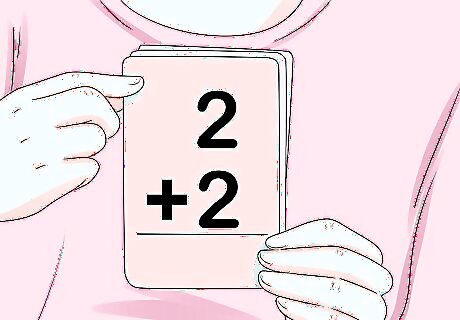
Use new flashcards with additions on them. Put additions like "1 + 1" or "2 + 2" on the flashcards. Then, use the addition cards and the objects with your child to take their skills to the next level. Have them show you how to add 1 to 1 or 2 to 2 using the objects. You can then add in flashcards that have more complicated additions or subtractions, such as "3 + 2" or "5 - 2."
Use different objects and games to make it more fun for your kid. Once your kid gets the hang of it, switch up the objects you're using so they don't get bored. Also, turn it into a game you can both play, like seeing who has the larger sum. Varying the activity every time will make it more engaging for your kid. EXPERT TIP Joseph Meyer Joseph Meyer Math Teacher Joseph Meyer is a High School Math Teacher based in Pittsburgh, Pennsylvania. He is an educator at City Charter High School, where he has been teaching for over 7 years. Joseph is also the founder of Sandbox Math, an online learning community dedicated to helping students succeed in Algebra. His site is set apart by its focus on fostering genuine comprehension through step-by-step understanding (instead of just getting the correct final answer), enabling learners to identify and overcome misunderstandings and confidently take on any test they face. He received his MA in Physics from Case Western Reserve University and his BA in Physics from Baldwin Wallace University. Joseph Meyer Joseph Meyer Math Teacher Turn math into a learning adventure. Every kid learns differently. Build on your child's strengths with playful academic activities and games that use their existing skills. By understanding how your child sees numbers, you can unlock their potential and help them become stronger at math.
Using Picture Books
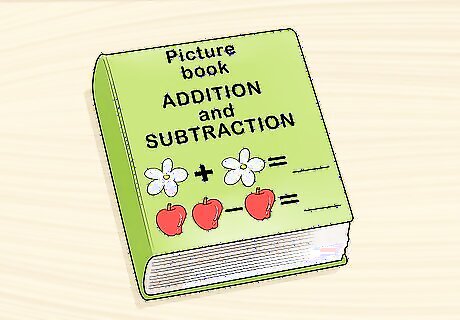
Look for picture books that focus on addition and subtraction. Picture books are a great option if your child is a visual learner and has a hard time doing mental math. You can find picture books for children that break down math concepts like addition and subtraction at your local library or online. The picture books may use animals or interesting characters to demonstrate math concepts. You may need to look in the children's section or the non-fiction section of your local library to find picture books on math for children.
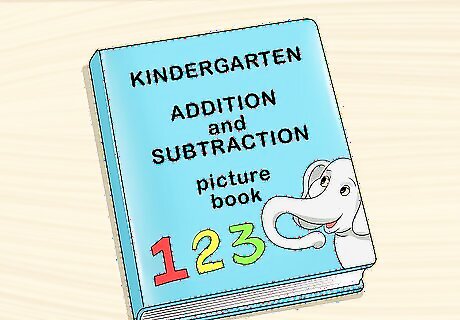
Get a picture book that suits your child's age and learning level. Look for a picture book that is made for your child's age group, such as 0-2 years old or 2-5 years old. Some picture books will also be labeled by grade level, such as kindergarten or grade 1. You can also get a picture book that has an engaging plot that weaves math into the story if your child is older and can follow along with a plot. You may get a picture book that uses bold visuals so your child stays engaged in the content.

Work through the picture book with your child. Sit down with your child and look through the picture book together. Encourage them to talk to you about the numbers, as well as the addition and subtraction in the book. Some picture books will require reader participation, such as counting the objects in the images or answering questions about addition or subtraction. Encourage your child to respond to the book and interact with it so they can follow along and learn.
Teaching with an Abacus
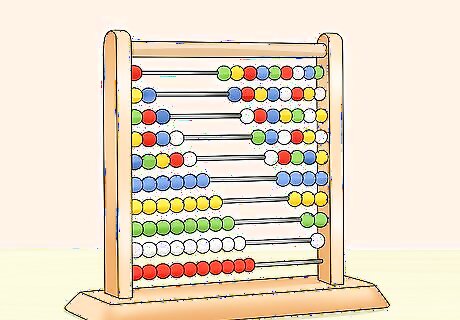
Get an abacus at your local toy store or online. An abacus is a counting tool consisting ten rods on a wooden frame and 100 colored beads. The beads are divided into rows of ten of the same color. Look for an abacus that has brightly colored beads, as this is usually more visually stimulating for children. The beads should consist of five rows of different colors, followed by five rows of the same colors in a different pattern. Get an abacus with larger beads, as they are easier for kids to move.
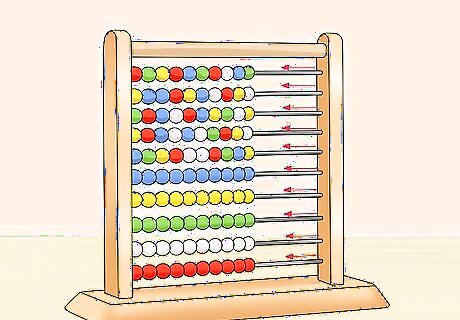
Push all the beads to the same side. Place the abacus on a table in front of your child. Then, move all the beads on the abacus to the same side on every row. This will make it easier for your child to watch you as you move and count the beads aloud.
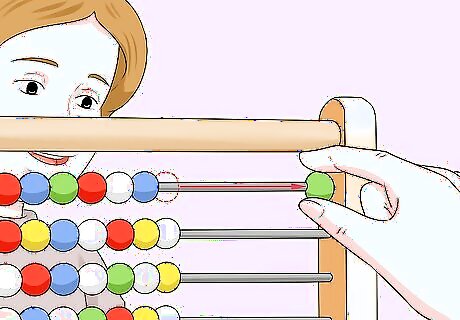
Move one of the beads on the top row. Show your child the abacus so they can see you moved one bead.
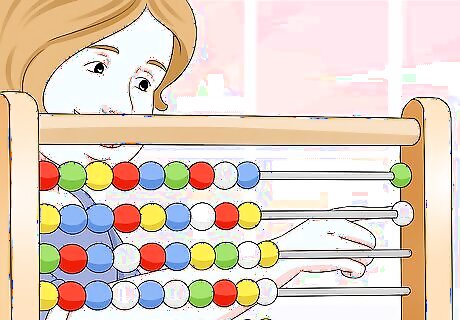
Have your child match your beads. Ask your child to then move one of the beads on the bottom row of the abacus. Say “1” together as they move the bead so they understand that this is one bead.
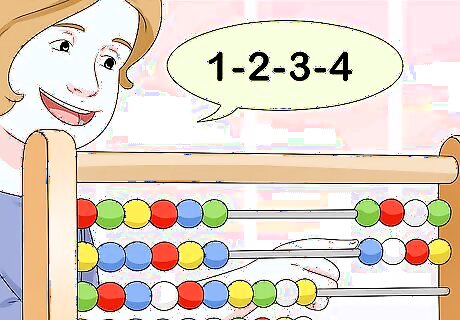
Repeat this with a different amount of beads. Move two beads on the top row and ask your child to match your move, moving two beads on the bottom row. Continue doing this until you reach “10.” Make sure your child says the numbers aloud as they move their beads. At “10,” all the beads on your row and all the beads on your child’s row should be moved to the other side of the abacus.
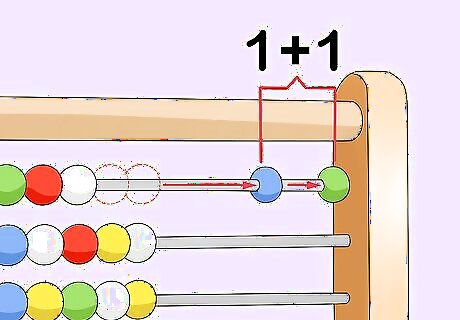
Add beads from one side to the other side of the abacus. Push all the beads on a row to one side of the abacus. Then, move one bead to the other side of the abacus and add one bead.
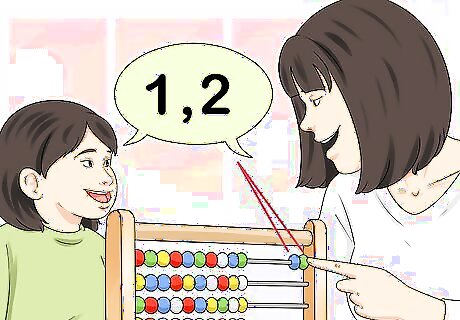
Count the beads you have moved aloud with your child. Point to the beads you have moved and say “1, 2” together with your child. You can then push another bead to the other side and count the beads again. Point to both beads and say “1, 2, 3” with your child. Continue doing this, adding one bead at a time to the other side of the abacus. Work with your child to get to “10.”
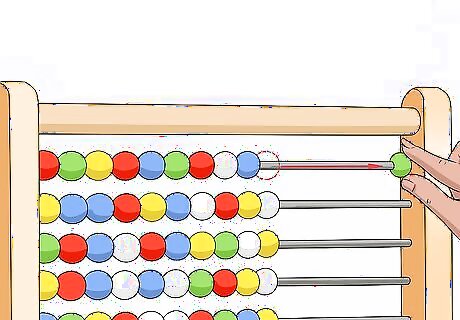
Subtract beads from one side to the other side. Make sure all the beads are on one side of the abacus. Then, push one bead to the other side.
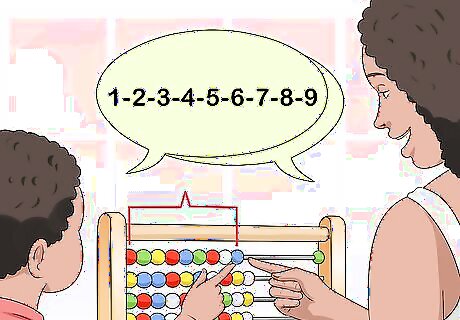
Count the remaining beads with your child. Ask your child to count the remaining beads on the side of the abacus. Say “1, 2, 3, 4, 5, 6, 7, 8, 9” together. Point to the beads as you count them. You can then continue to subtract beads from one side and count the remaining beads together. Do this until you reach one bead remaining and then no beads remaining on one side of the abacus.
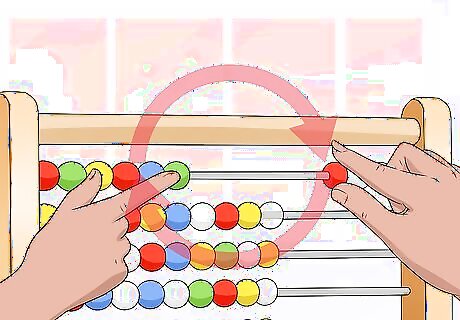
Continue practicing addition and subtraction with the abacus. Trying adding two beads at a time to one side of the abacus and counting them out. Or, subtract two beads at a time and count out the remaining beads with your child. Work with your child slowly so they can learn how to add and subtract small amounts, followed by larger amounts.

















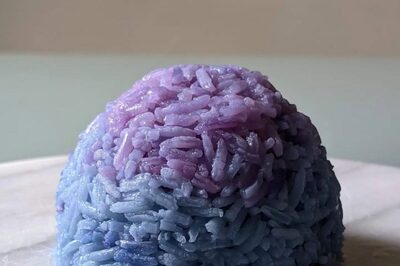

Comments
0 comment